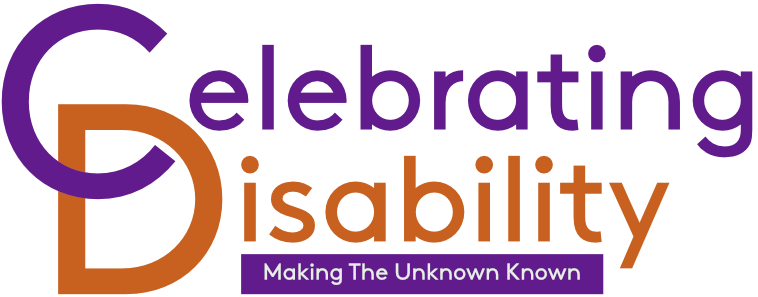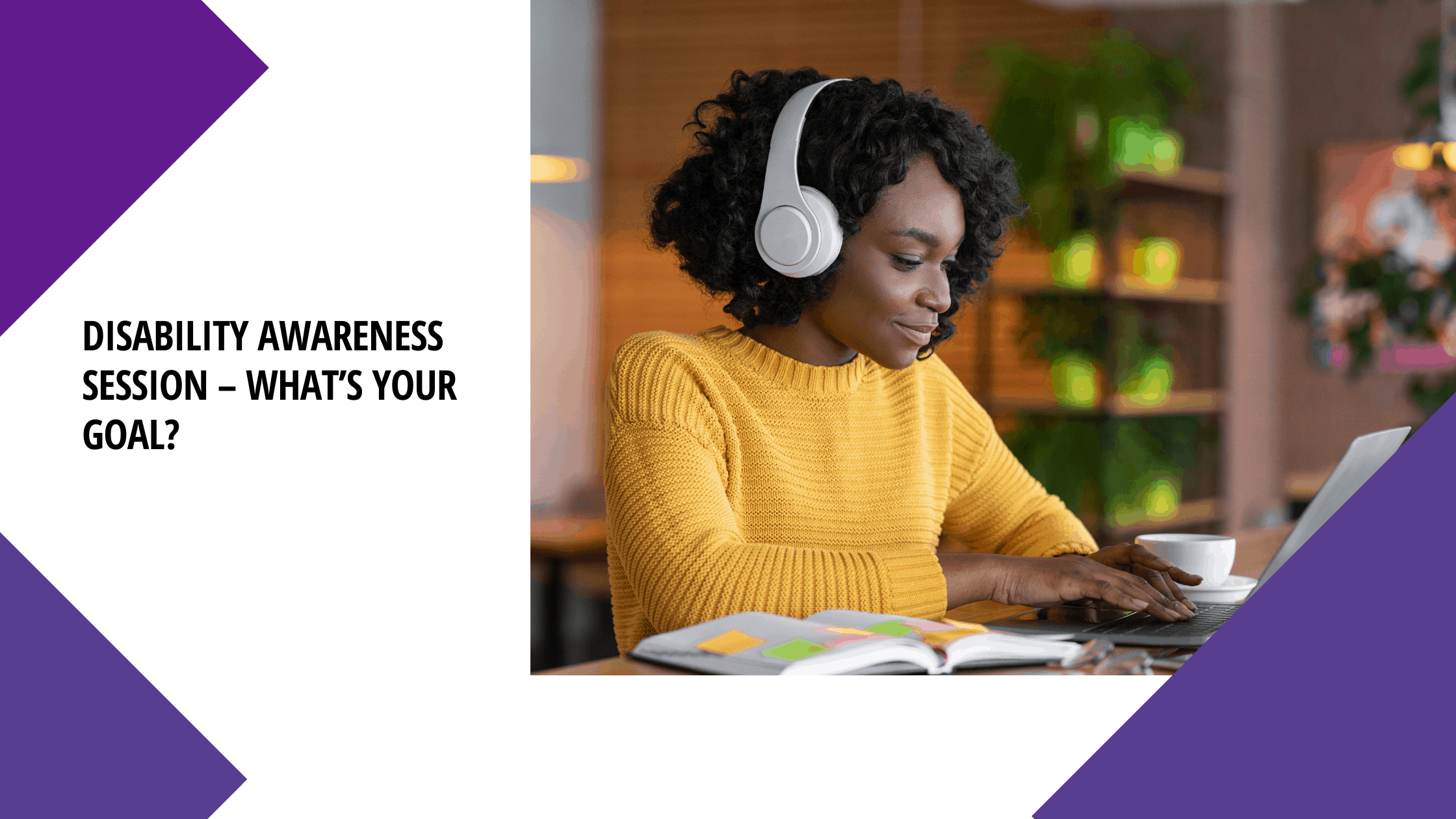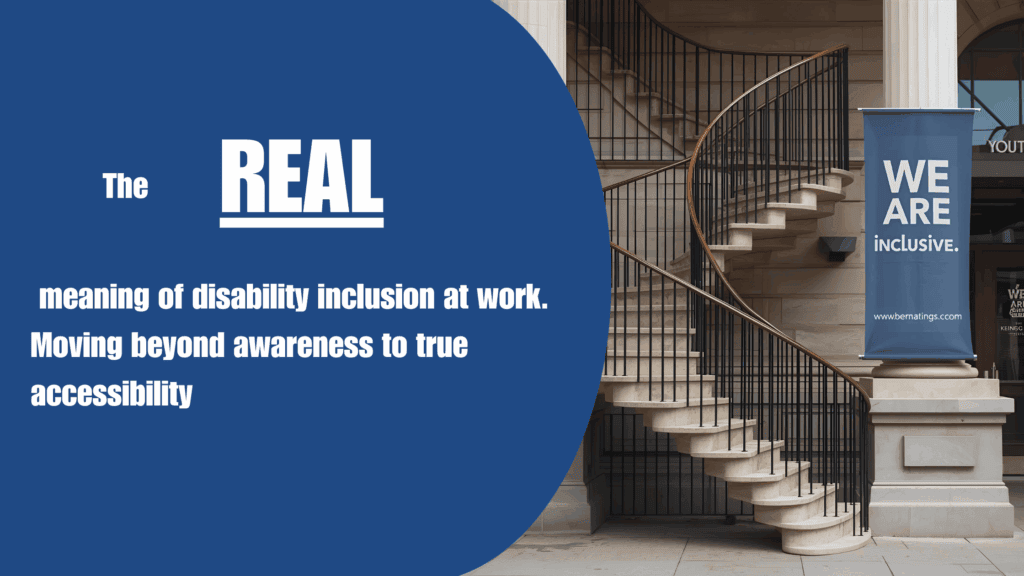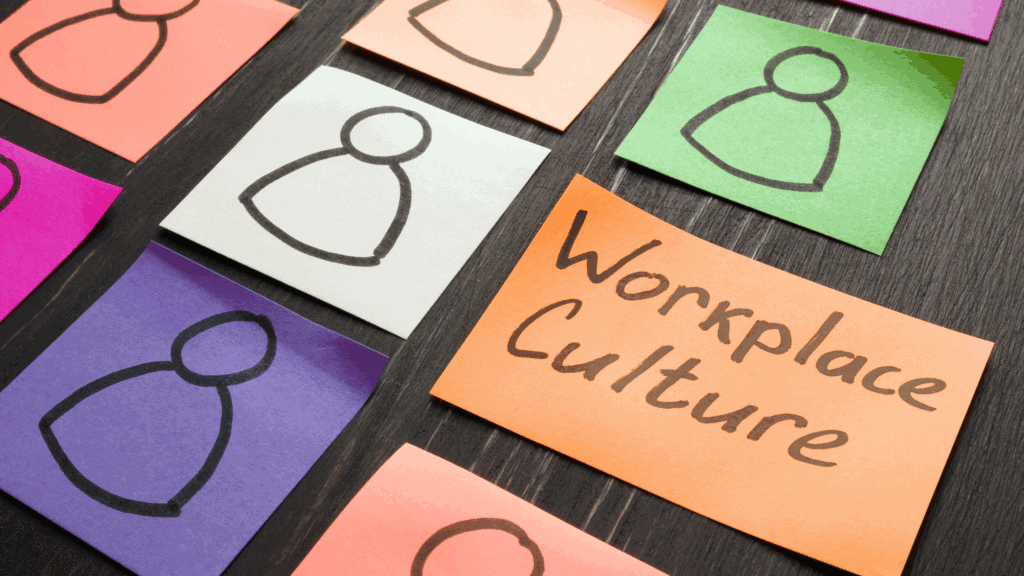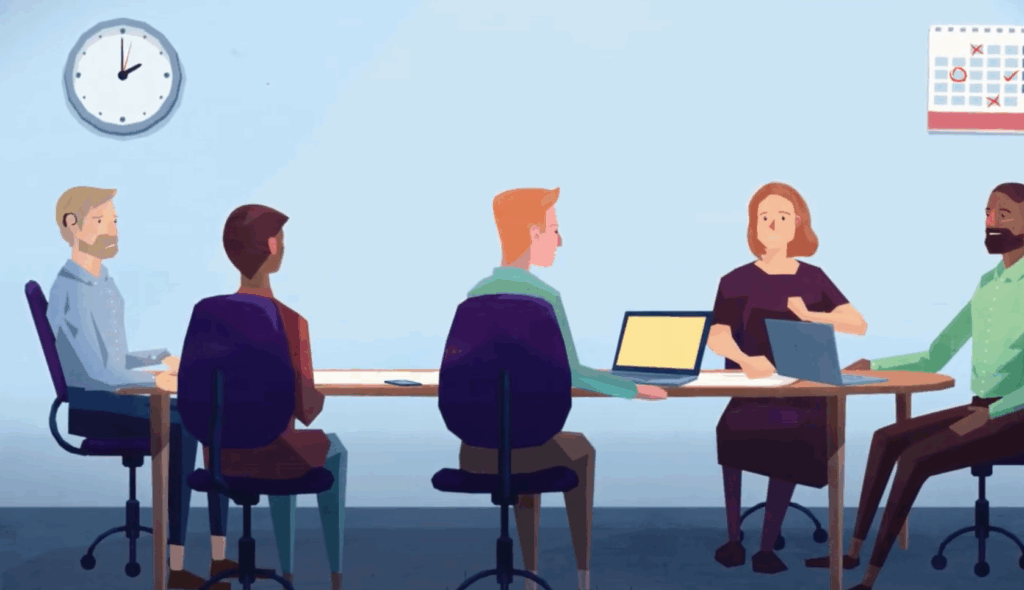What are you doing before and after your disability awareness training session or talk? How are you measuring the impact of the session? How are you ensuring you meet the needs of the audience?
Now, when I say meeting the needs of the audience, in this context I am talking about making sure the content matches the information needed. Meeting the needs of the audience can also mean making sure it is accessible and inclusive for engagement purposes. I have written articles about this as well. To find out more about this topic, you can read this article here.
It’s all about return on investment
That may sound cold, but it’s not. You have not only invested in me or your trainer of choice to deliver your session. You have also invested in the employees to deliver the service/product that you hired them to deliver. We may know of the business case for diversity and inclusion. Caroline Casey, Founder of The Valuable 500 talks about the business case for disability inclusion here. Therefore, when we create cultures that are inclusive, welcoming and safe for disabled employees, the outcomes, innovation, psychological safety, happiness and productivity of the whole workforce is improved.
Much of the reservation around disability inclusion is not knowing what, why and how. By providing training and consultancy support in the right way, you can work with your employees stamp out and eradicate the elements that stop people from purely opening up, communicating and learning from each other. With that in mind, try to ensure that your disability awareness session meets the needs of the people that are not only going to be in the room but are indirectly going to be benefiting from the session in the long run. These may be: colleagues in the office, direct reports of line managers, disabled employees and candidates across the organisation and disabled customers using your service or product. To name just a few!
Why do you always say disability awareness and not disability inclusion?
If the disability inclusion expert used language in her blogs that nobody ever searched for and therefore never read, do those blogs exist?
Where I write on my website and on my blogs, I deliberately use language that people are going to search for when they’re looking for answers. Otherwise, nobody would ever find anything! It is not common language to use terms like “disability inclusion”. Therefore, to engage you in the first place, I will use the language that you will be typing. However, as you will know from content written, awareness is just the start; inclusion is what we will do together.
Why are you focusing on disability?
This is not a trick question. For many organisations, disability is not an obvious priority. For many organisations it is a far 3rd after persons of colour (POC) and women. Although there are many reasons that this may be the case, we will not go into that in this article.
As a disability inclusion expert, I of course am going to champion disability for being a top priority as it should for many reasons including the fact that the prevalence of disability is growing and disability is diverse and intersectional. By this, I mean that as a disabled person, within the realms of disability alone, I identify as a physically disabled wheelchair user with limited mobility and extra care support needs. That is not even getting into all the ways I identify beyond my disability.
You might be looking to create a more inclusive recruitment process that extends the talent pool pipeline of potential candidates. Or understand more about what the physical barriers to the built environment are that stop disabled people physically accessing and therefore feeling included in the workplace. It may be developing the routes to engagement on your website.
Finding your reasons
This isn’t something that you should feel you have to do alone. After all, this is part of what your trainer is for! As well as your trainer, you can utilise your assets. By this, I’m talking about your employees. They will definitely have an opinion. As we discussed above, disability is intersectional. Therefore, just because you can’t see it, doesn’t mean it’s not there. This also means that you will need more than one experience to help you find your reasons.
So… Here are some of the ways you may want to get started:
Co-creating and co-designing
Co-creating and co-designing is where every user group comes together to design the outcome. Everyone in the room has the same level of agency, access to the same tangible and intangible resources and information. Co-creating a service or training session with your disabled and non-disabled employees ensures everyone’s experiences are heard and implemented into the structure and outcomes for the session.
Equality impact assessments
Equality (or equity) impact assessments are used to audit policies, documents and any process within the organisation from strategy to operational. They are designed to assess the impact on the workforce and/or customer base in terms of equality, fairness, diversity and inclusion. After completing an equality impact assessment, you will have a better idea on what needs to be improved and where to start.
Your delegates
Don’t forget to ask your intended delegates what they would like to receive from their disability awareness session. Many of the time, the delegates attending and participating in the session are operational and strategic staff. Having insight into what it is like working within the organisation on a daily basis and/or working with disabled customers will really help to shape the delivery of the training.
Ask the audience
There are many ways that you can instantly ask your audience for feedback. Understand how they are getting on, whether they feel included and what they feel needs to be improved. This will be a really easy and simple step to help you create your goals for your disability awareness training.
If you would like to talk informally about how we can support you to implement some of the suggestions above and to deliver disability awareness sessions within your organisation, speak to Esi. You can do this easily by clicking here.
